Have you ever heard of Balm of Gilead? It's a medicinal balm made with cottonwood tree buds that form in spring. Balm of Gilead goes back to Bible times and is known for its healing properties. If this topic interests you, be sure to check out my St. John's Wort Oil post as well!
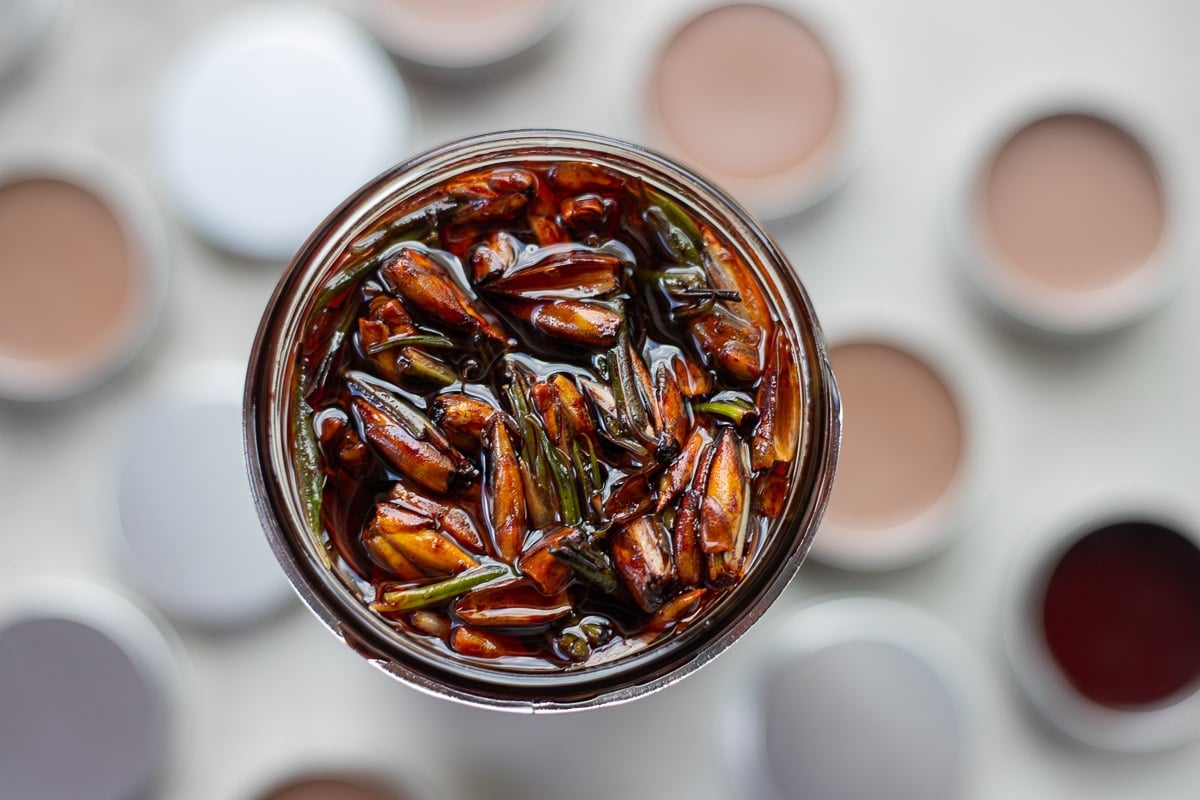
The last few springs I've wanted to make Balm of Gilead, but I have missed the window of opportunity to collect the cottonwood buds before they open up to reveal the new leaves inside. Today, however, we rode the quad down to the cottonwoods near our property and collected enough buds to make some balm, finally!
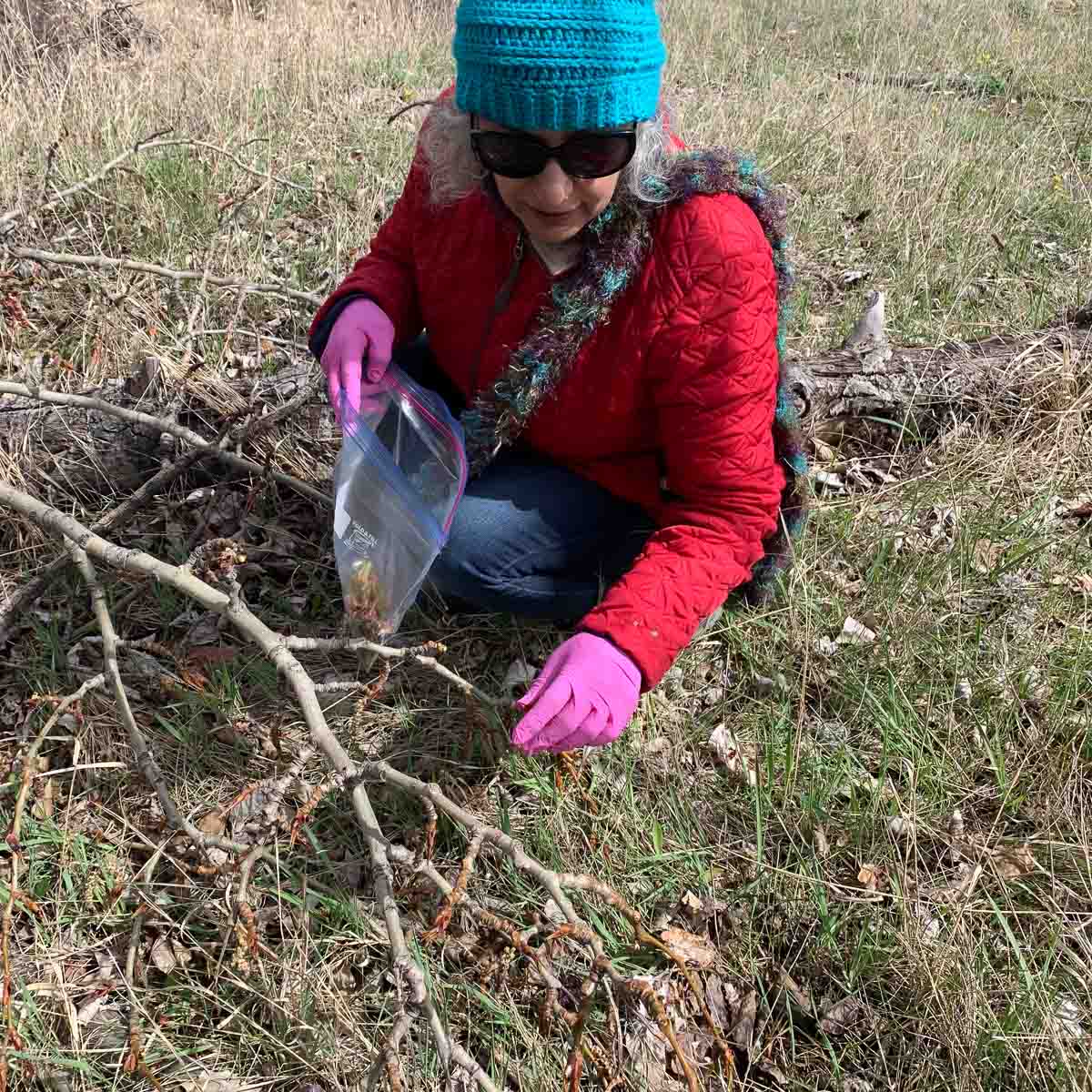
Pro Tip: If you're lucky enough to find a downed branch, it makes for easy picking and you don't have to worry about over-harvesting from a single tree.
Jump to:
🌿 What Is Balm of Gilead?
Balm of Gilead is a healing salve mentioned in a few verses in the Bible, but the verse highlighted below is my favorite. So much so, that I walk around the house asking out loud, "Is there no balm of Gilead? Is there no physician here?" No one ever seems to answer me, I know, I'm weird.
Is there no balm in Gilead? Is there no physician there? Why then is not the health of the daughter of my people recovered?
Jeremiah 8:22
Gilead was an actual place (situated in modern-day Jordan). It was the home of the prophet Elijah. Additionally, the Assyrian King Tiglath-Pileser III, established the Assyrian province of Galʿazu (Gilead) in about 733 BCE (Britannica.com).
I've said it before and I'll say it again, there's always an Assyrian connection, sometimes you just have to dig a little deeper! 😏 Gilead was also known for its wonderful variety of spices and its healing ointments.
Balm of Gilead was prepared from the resin of a local plant, some suggest a Pistacia lentiscus (mastic tree), while other sources say it could have been Commiphora gileadensis (Arabian balsam tree). Both produce a medicinal resin, similar to Myrrh, which is a gum resin, extracted from Commiphora Myrrham trees. Myrrh has been used throughout history to make medicine, incense, and perfume.
These days, balm of Gilead is prepared by infusing poplar tree leaf buds in oil for an extended time, usually 6 to 8 weeks. The buds' sticky red resin is expelled into the carrier oil, giving the oil a gorgeous red tint and a unique scent that's hard to describe. The closest comparison would be fresh pine, but not exactly.
As the infusion takes place, the medicinal properties in the resin are transferred into the oil. This oil can be used as is, or mixed with beeswax to make the balm.
According to the Lost Book of Herbal Remedies, by Dr. Apelian, Balm of Gilead has anti-bacterial, anti-microbial, and anti-fungal properties. It can be used to relieve skin conditions like rashes, eczema, sunburn, cracked skin, and psoriasis. It is also said to relieve arthritis and inflammation and to help soothe minor aches and pains.
🛒 What You Need To Make It
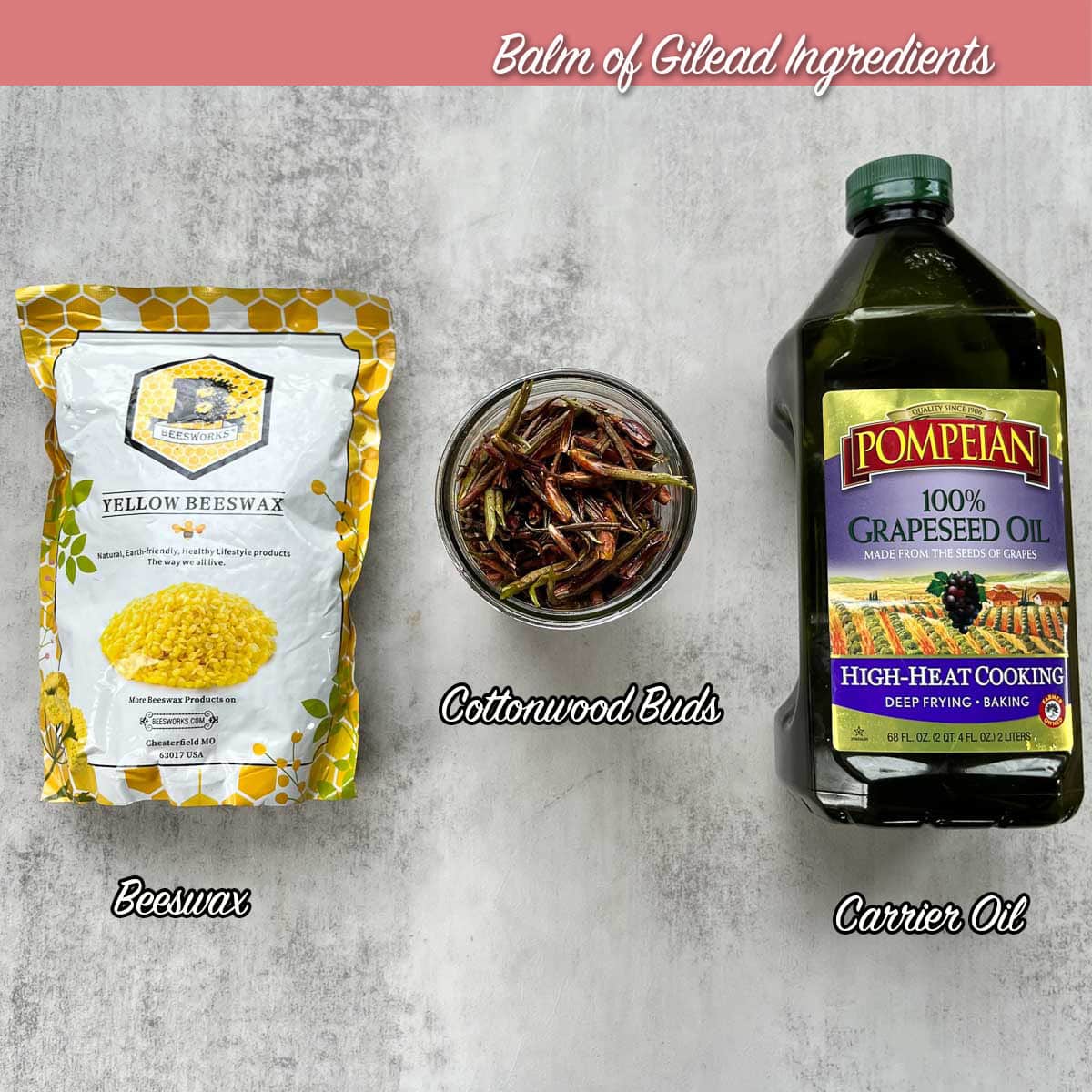
🔖 Ingredients & Substitutions
- Cottonwood Buds: Fresh, unopened (if possible), sticky cottonwood buds. The amount you collect will determine how much oil beeswax you will need. For every cup of buds, I use 2 cups of oil.
- Carried Oil: Choose from grapeseed oil, coconut oil, or olive oil.
- Bees Wax: The beeswax is needed to thicken the infused oil into a balm.
- Optional: A small amount of shea butter can be added to give the balm a luxurious feel, vitamin E oil (great for the skin), or essential oils can also be added.
🌳 Balm of Gilead Tree Identification & Harvesting
Cottonwoods love water and are commonly found growing along rivers and streams. They are enormous and can reach up to 200 feet in height!
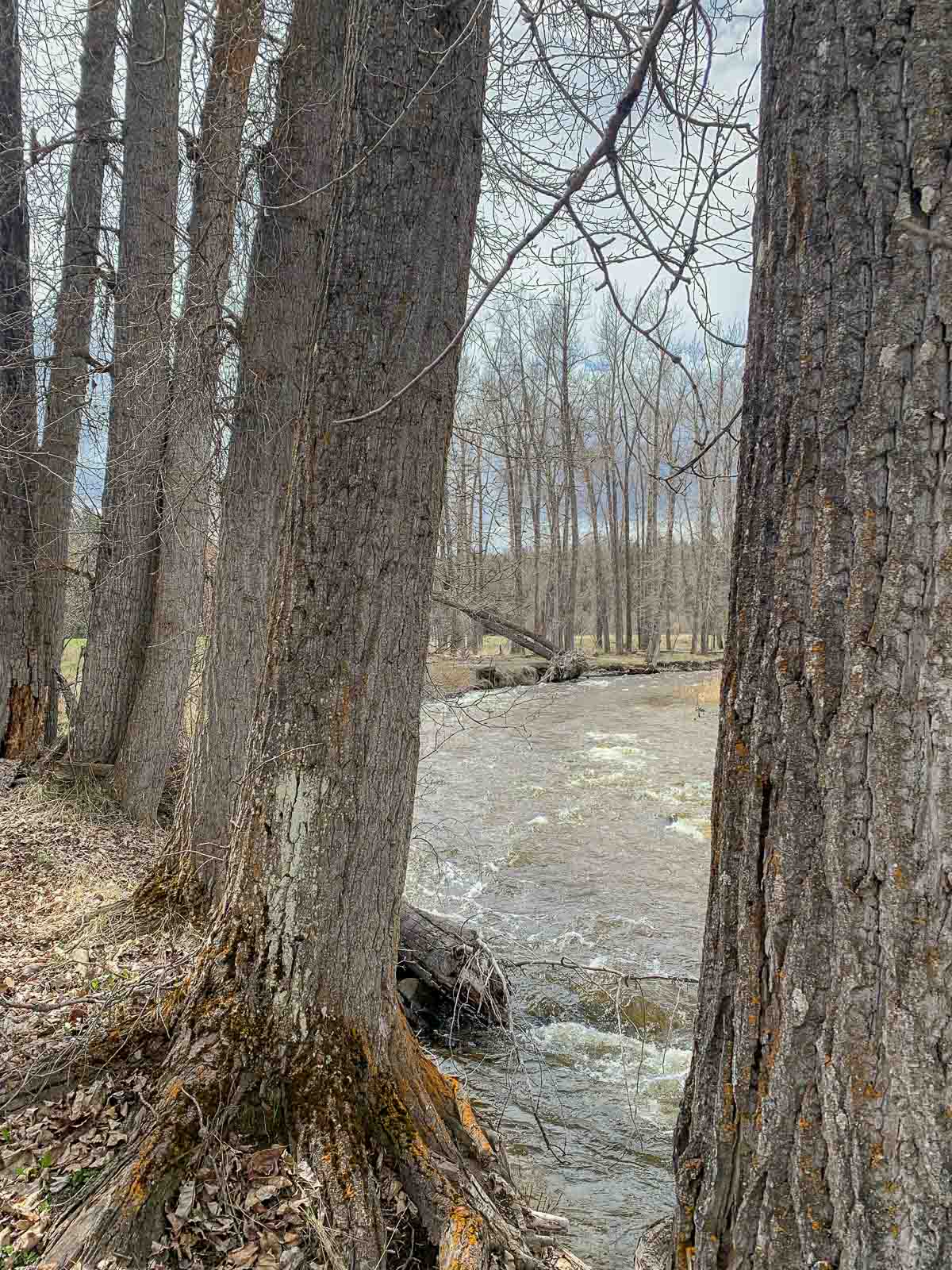
One of the ways to identify cottonwoods is by their bark, which is mostly gray and deeply furrowed. Before the brown, pointy buds form in spring, the tree loses all of its leaves, leaving it bare.
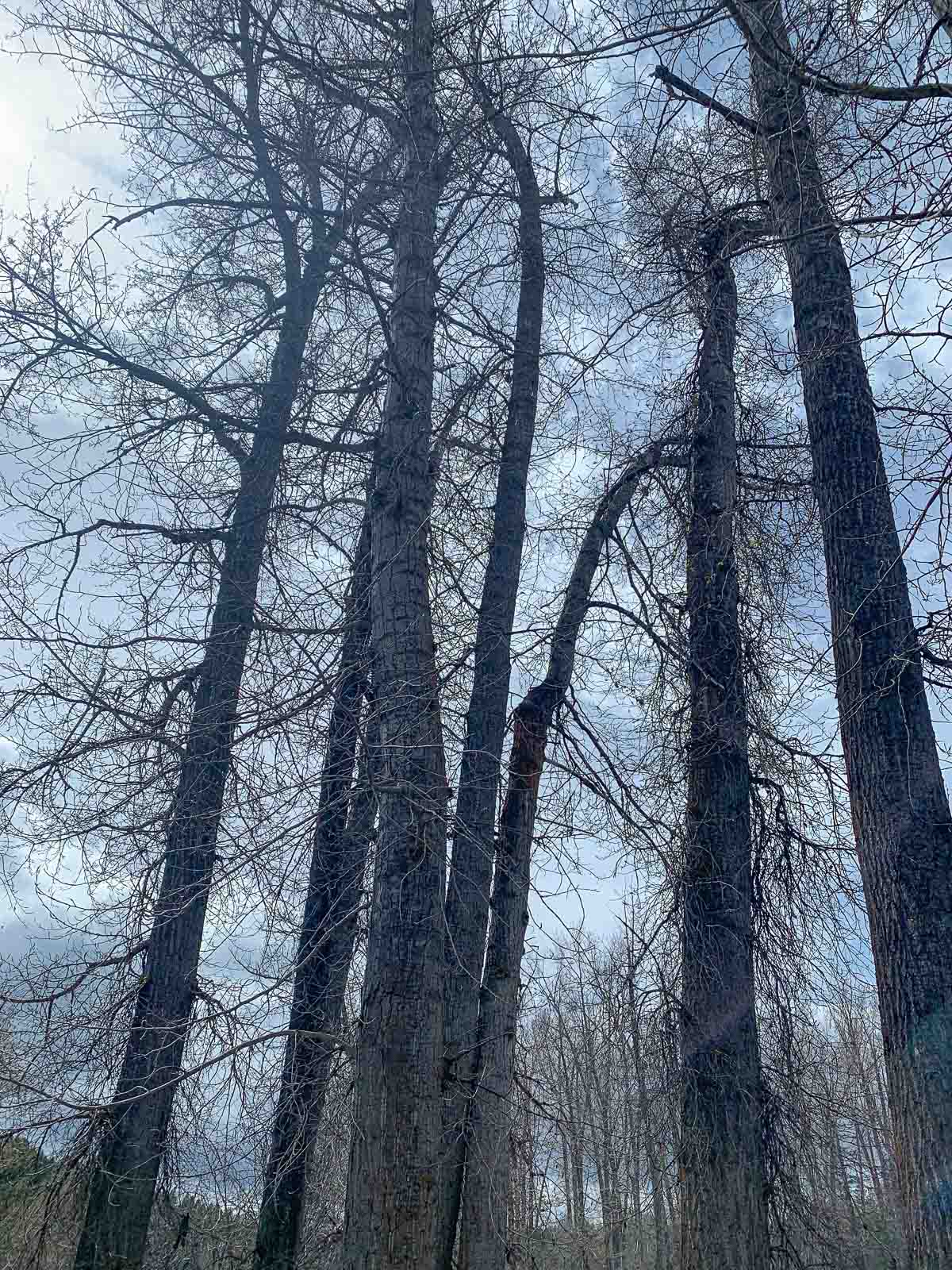
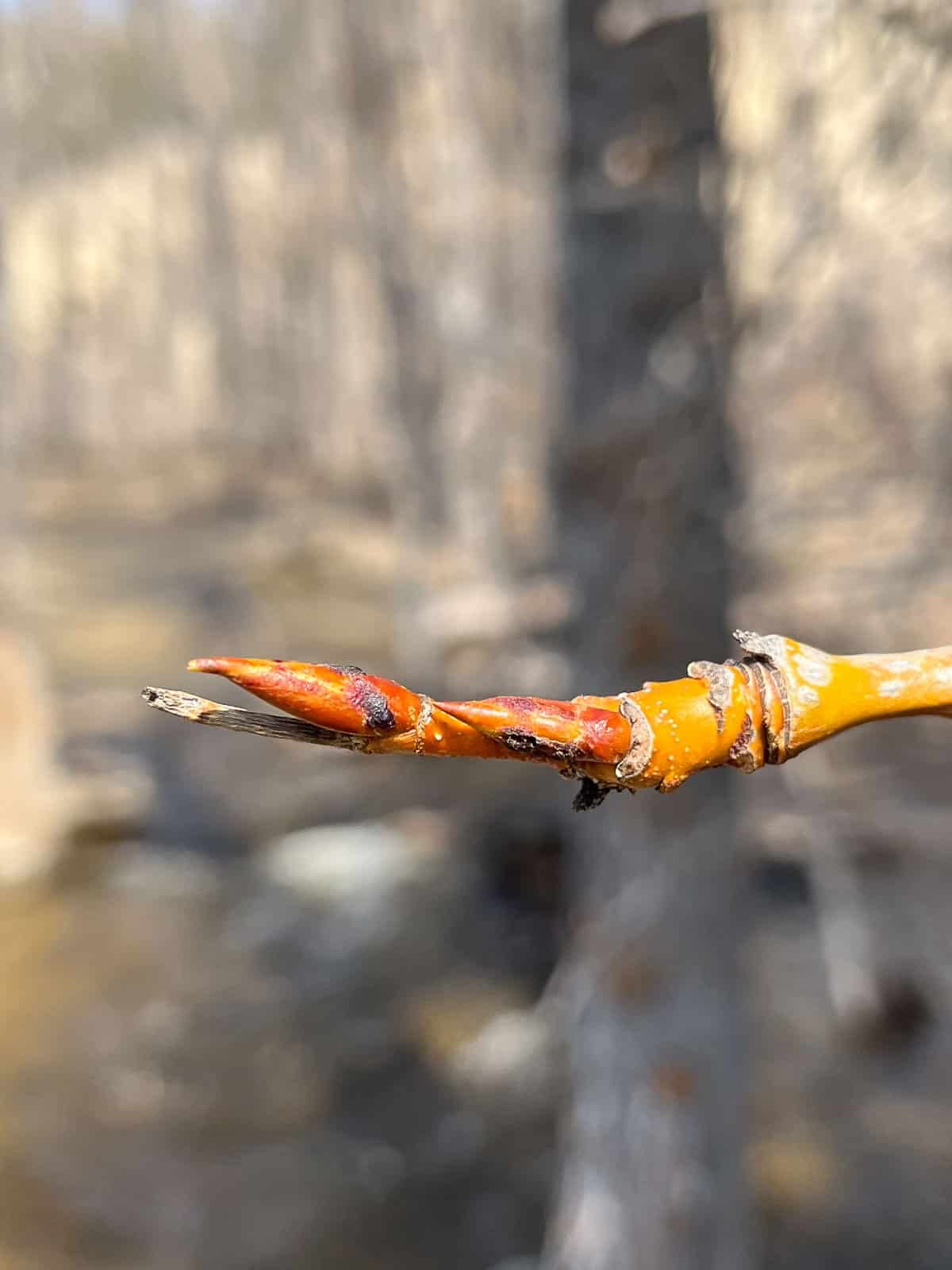
It is generally recommended to collect the leaf buds before they open, but if they have recently started to open, they can still contain plenty of resin making them still usable.
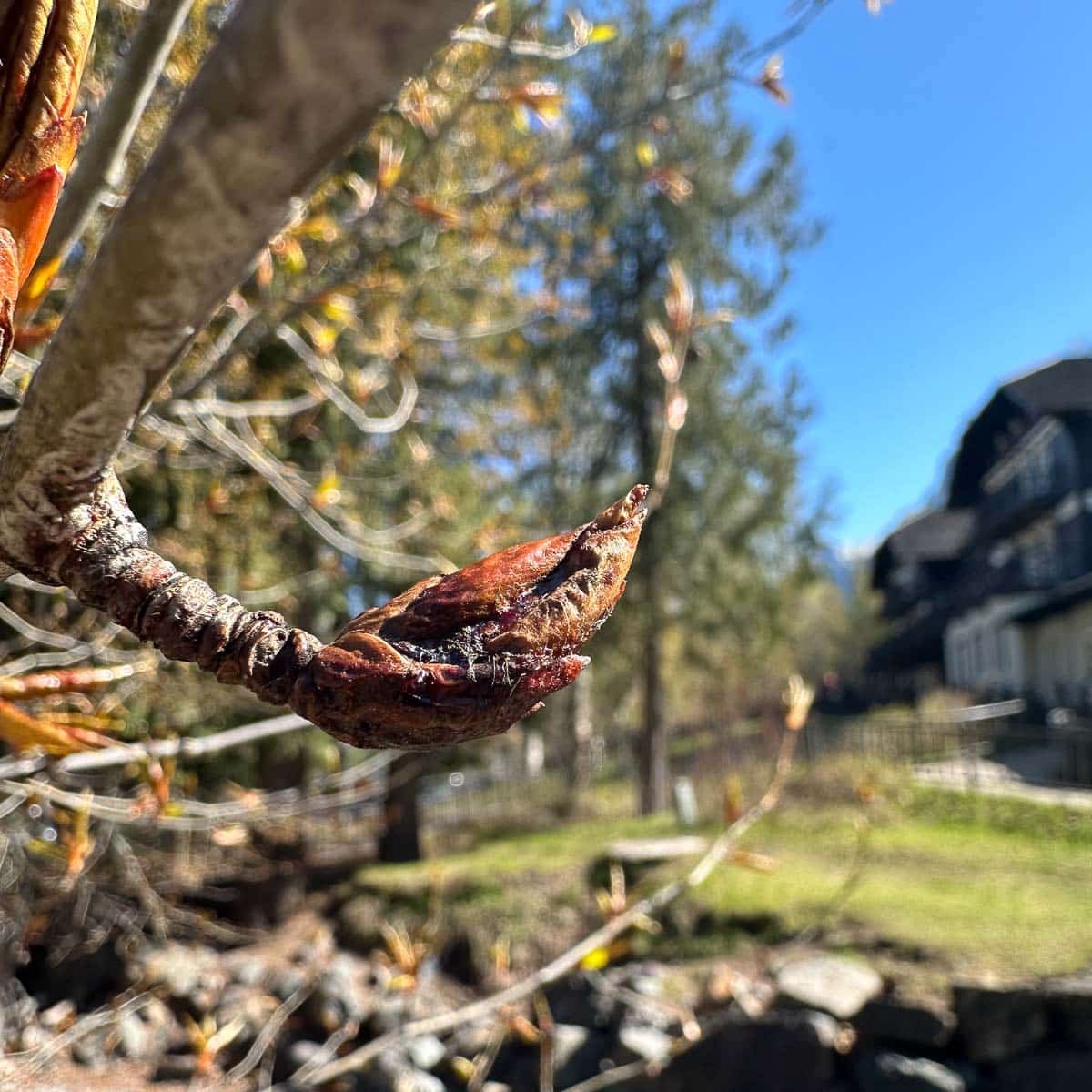
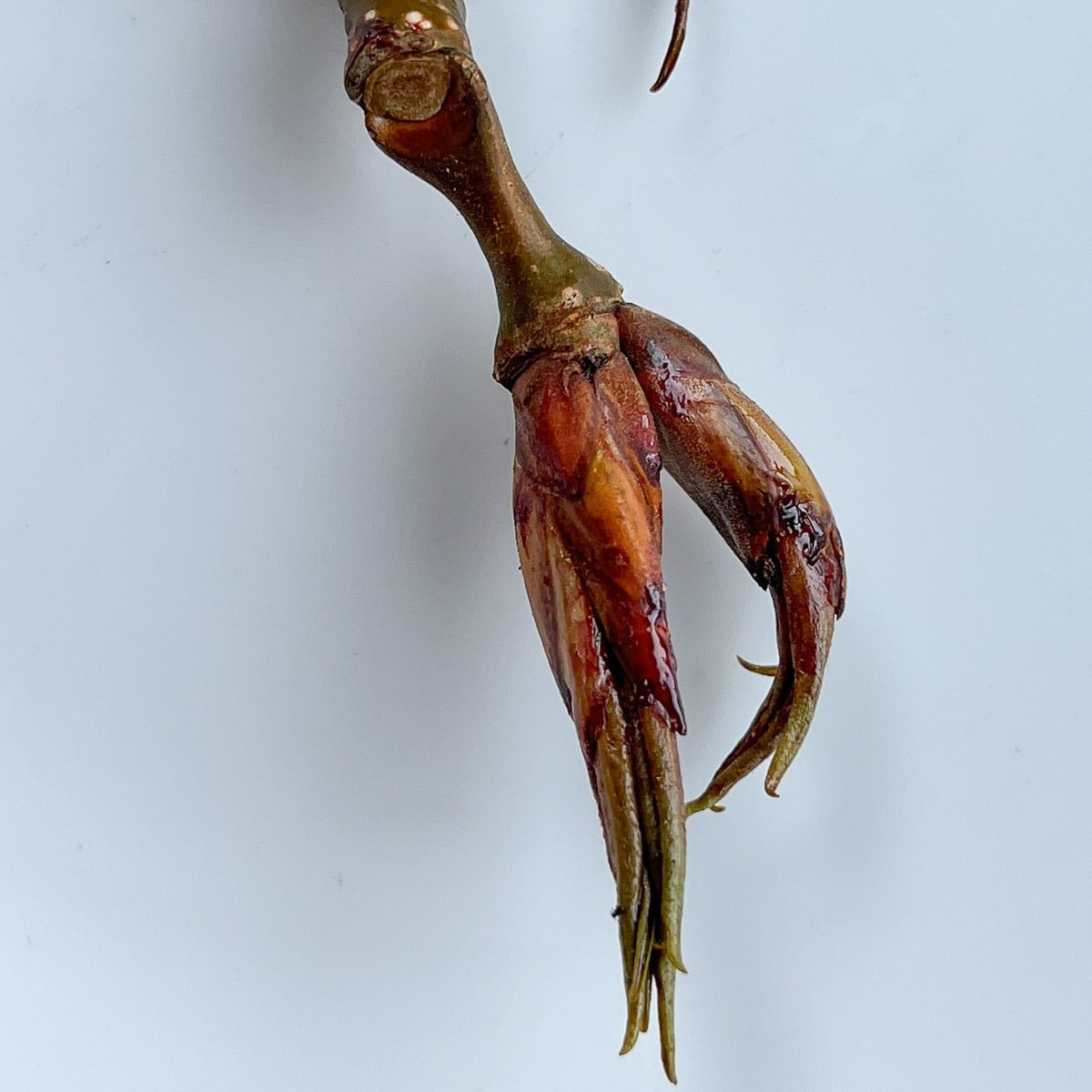
Speaking of resin, you will want to wear a pair of disposable gloves because the juicy buds are quite sticky and their resin will get all over your hands. Once picked, toss them into a ziplock bag until you are ready to use them.
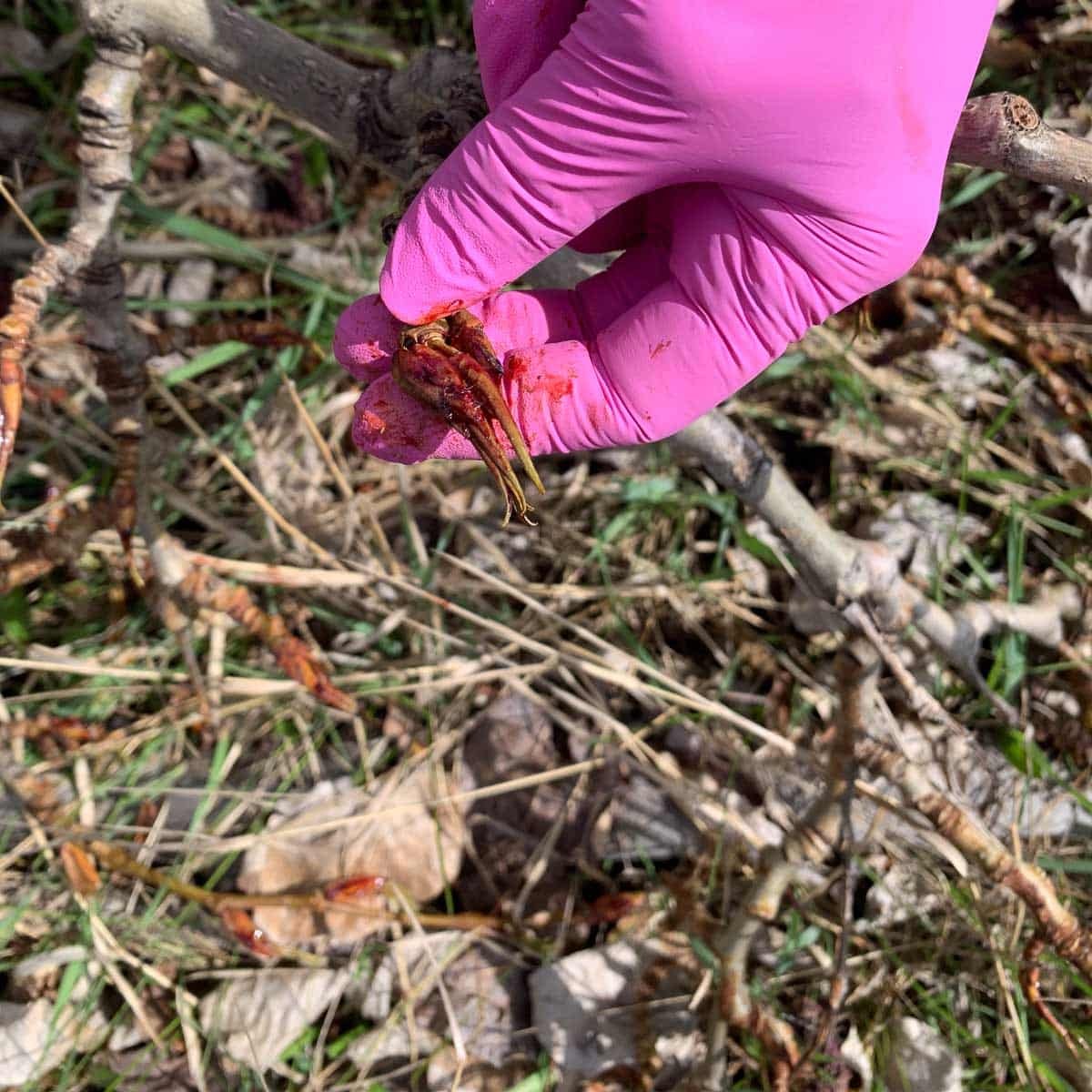
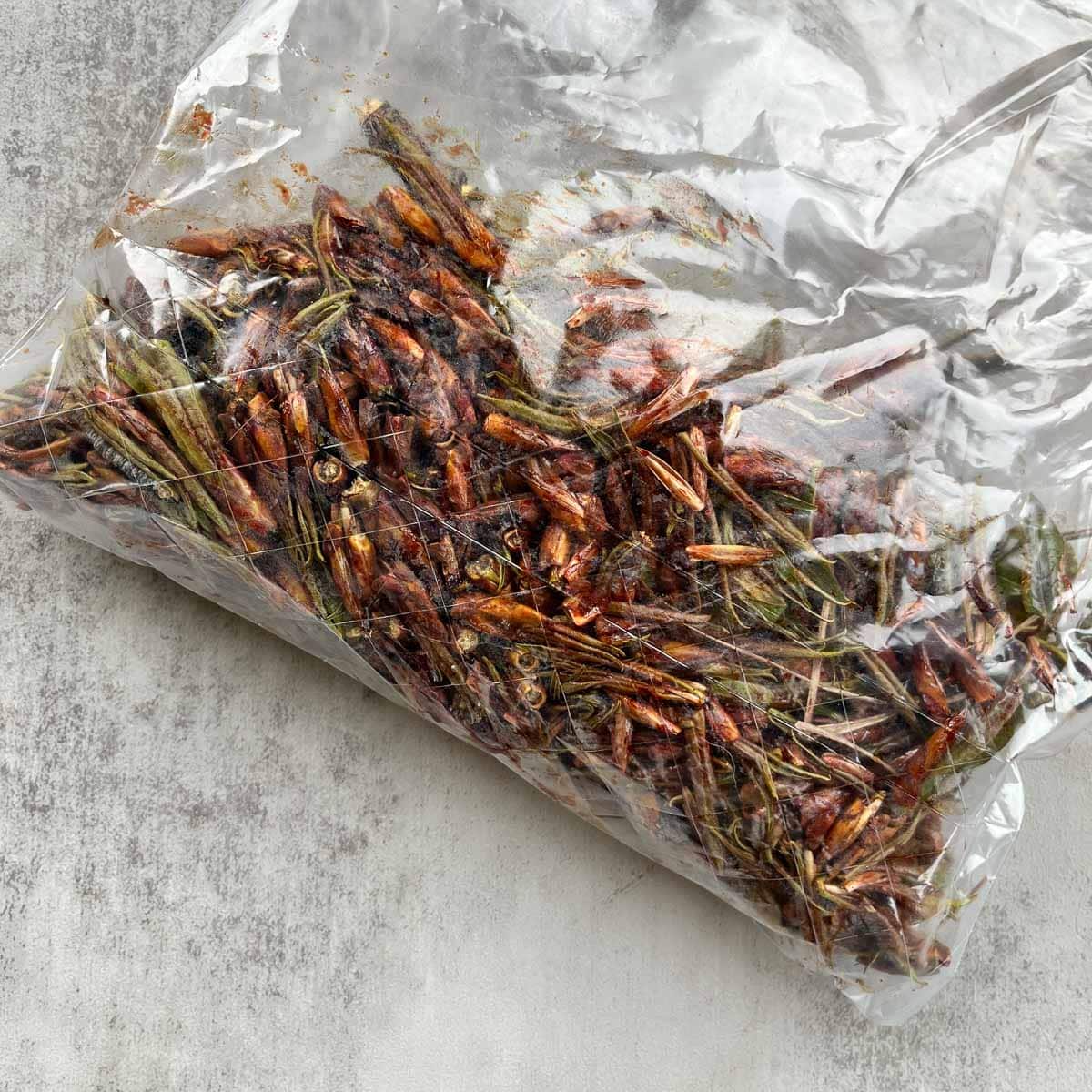
Pro Tip: Because some species of poplars and willows contain salicin in their bark, you may want to avoid them if you are allergic to aspirin. I recommend testing the balm on a small area first, especially if you have sensitive skin.
Would you like to save this recipe?
🌱 How to Make Balm of Gilead
Cold Infusion Method
Place cottonwood buds in a jar and cover with oil until fully submerged. Cap the jar and place in a sunny window to allow the resin in the buds to infuse the oil over 6-8 weeks.
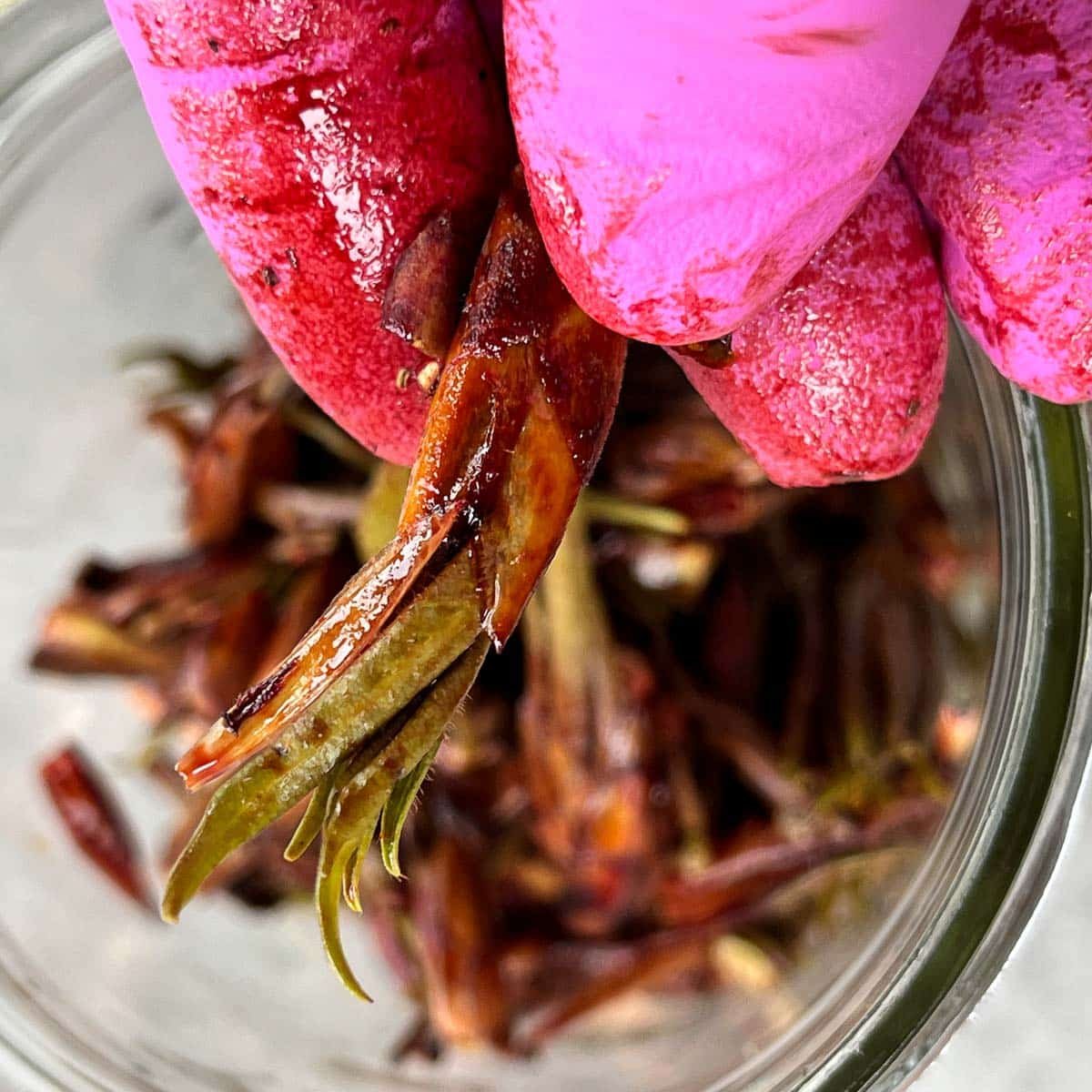
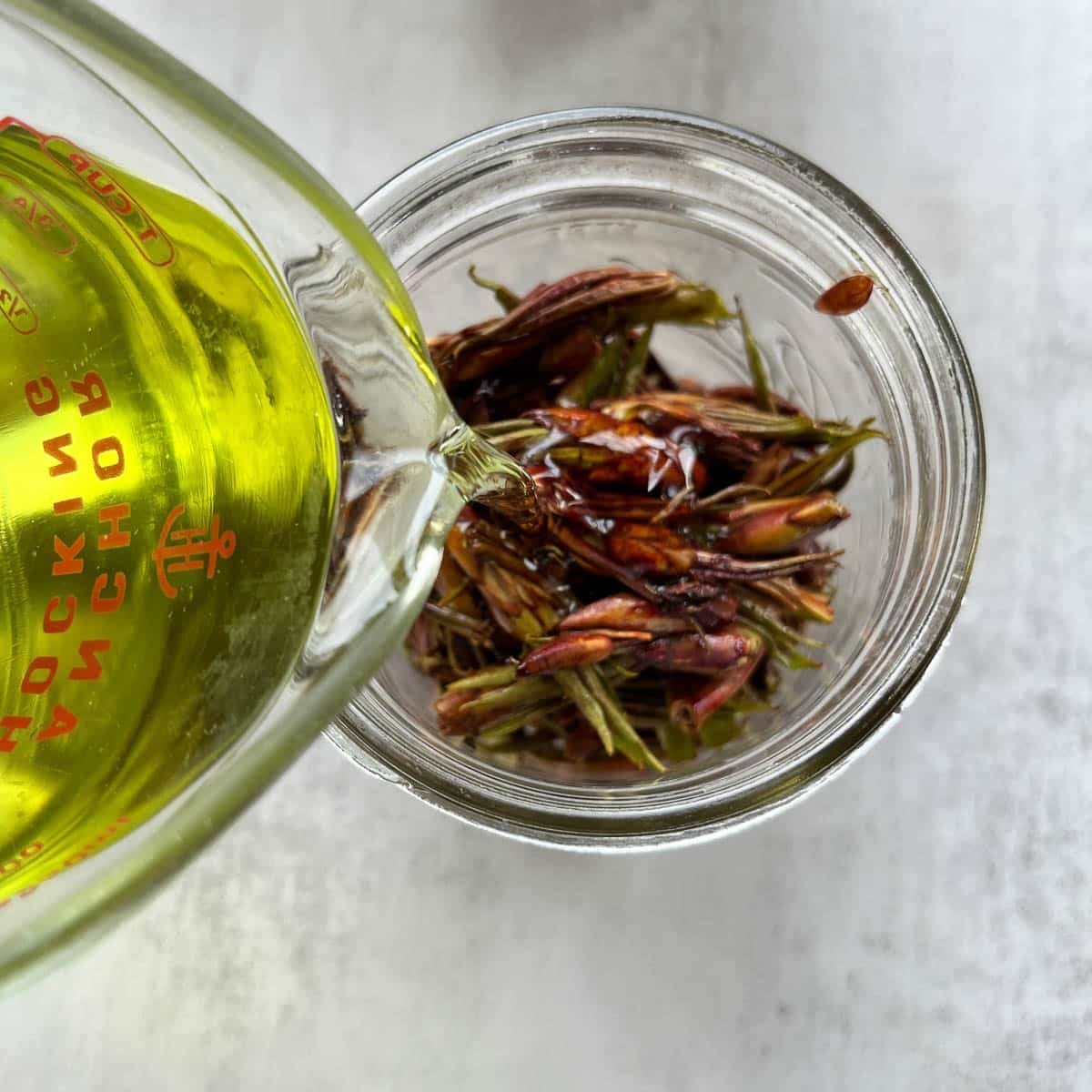
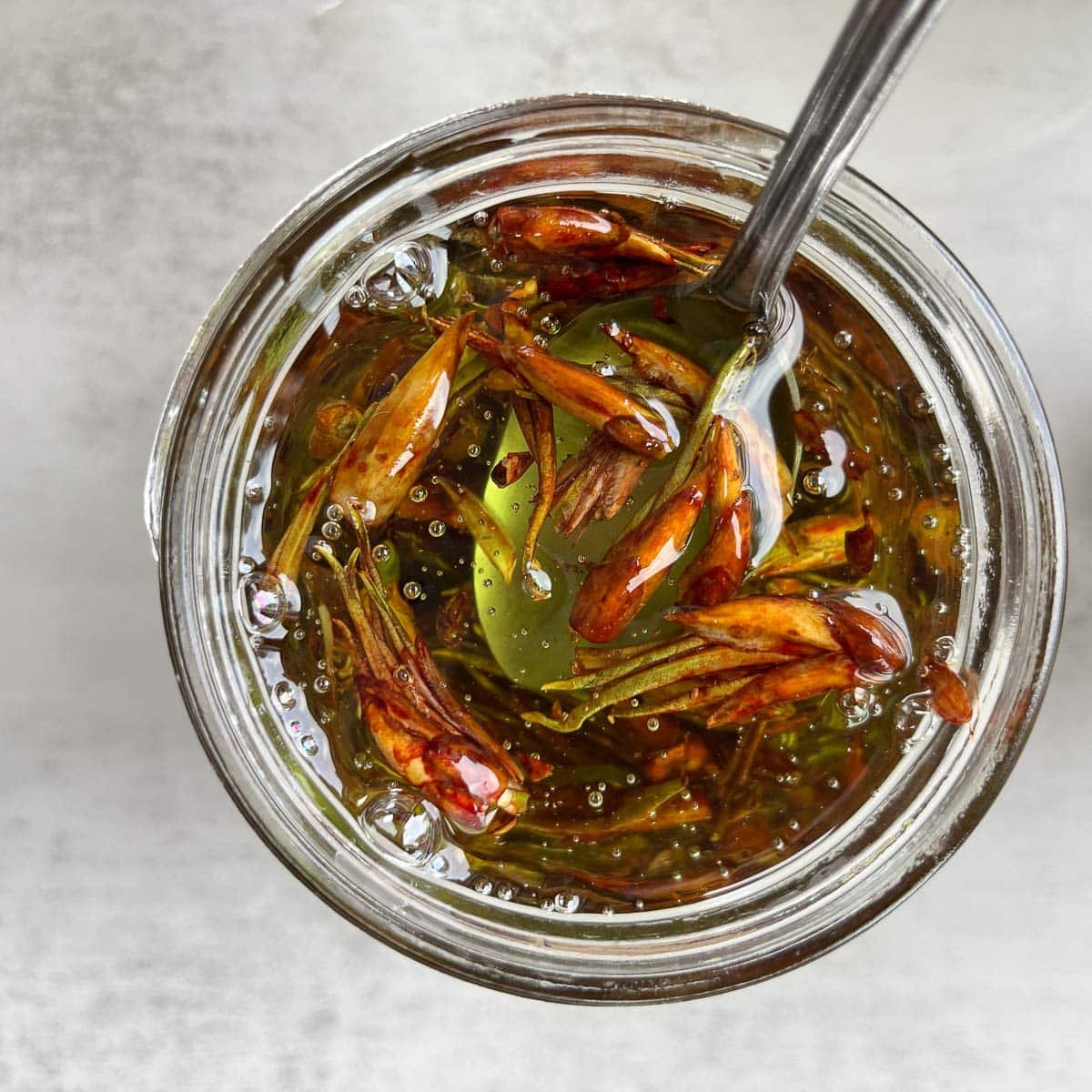
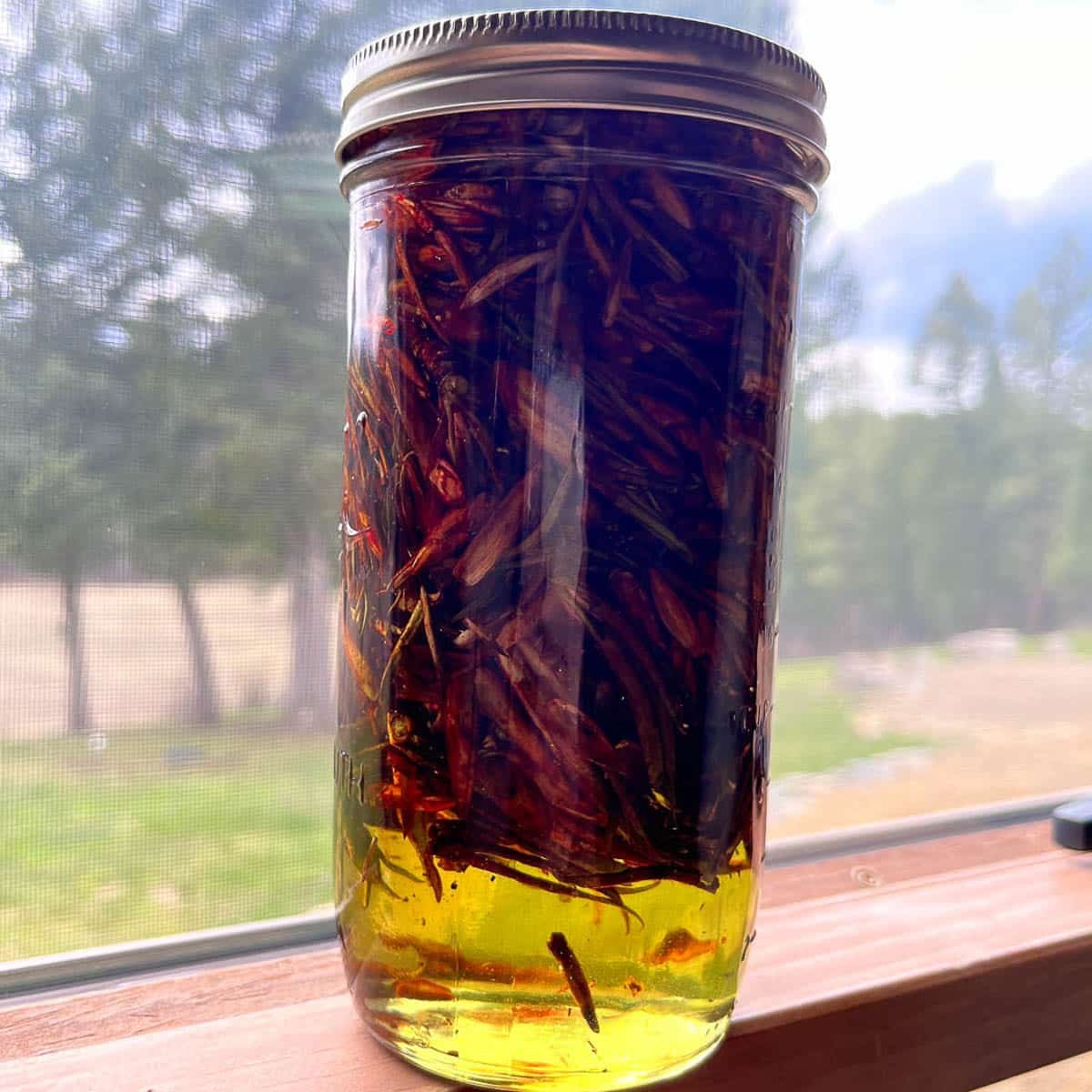
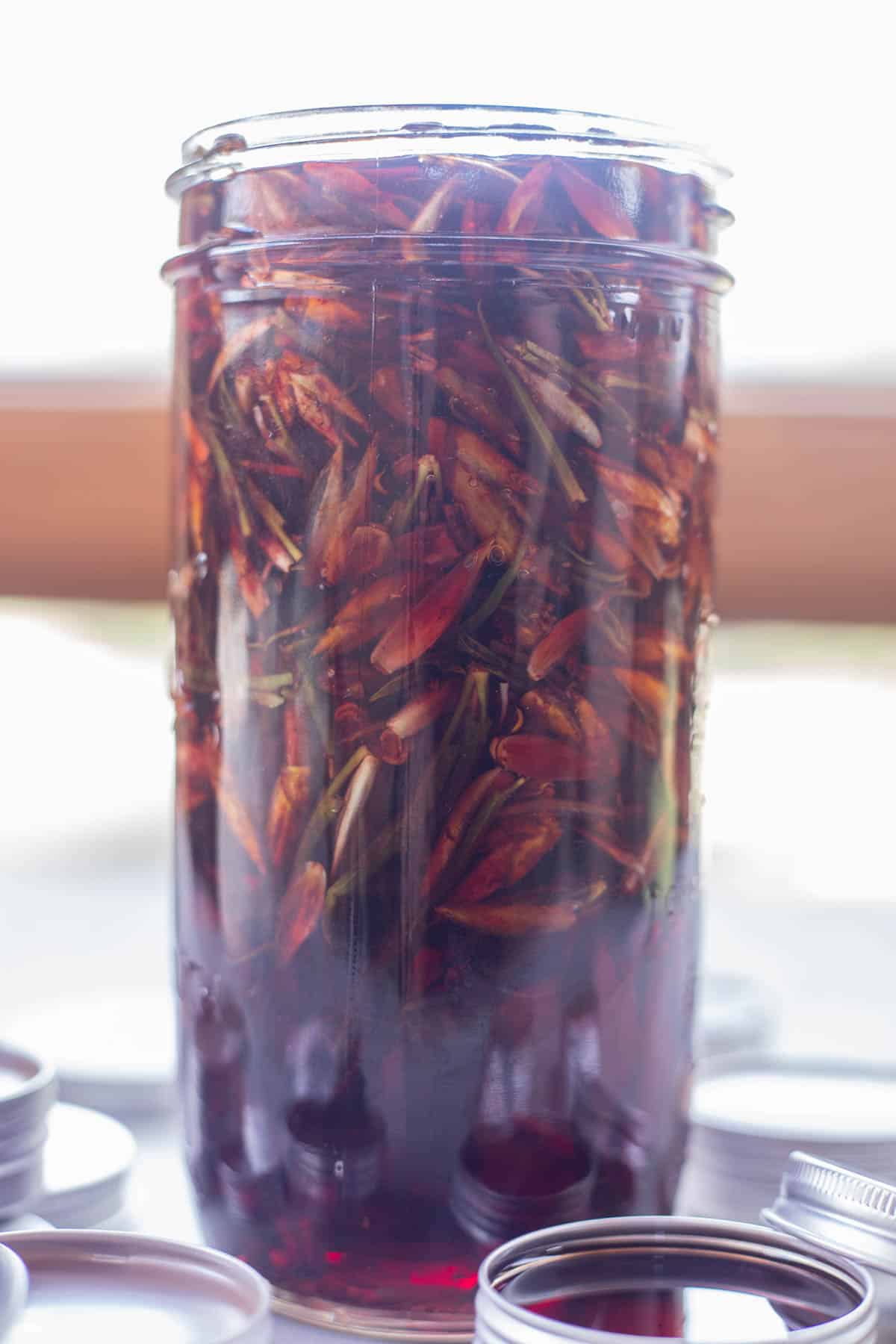
Pro Tip: If you lack patience, like me, you can use some of the oil as needed, while allowing the rest to infuse longer.
Hot Infusion Method (for those who don't like to wait)
Add 1 cup of cottonwood buds to a small crockpot and cover with 2 cups of oil. Heat the oil over the lowest setting (warm) anywhere from 4 hours to a few days.
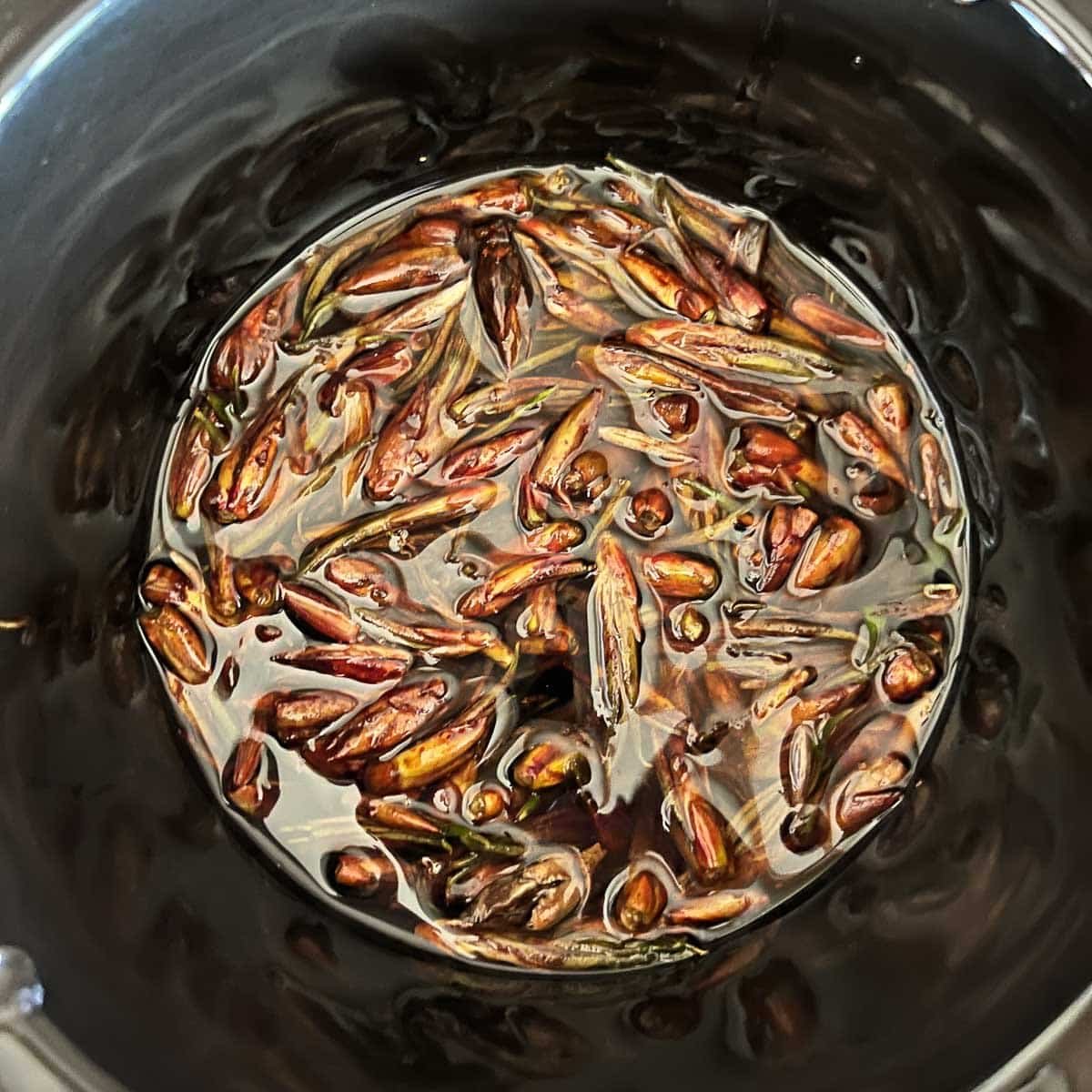

Pro Tip: If the oil gets too hot, turn it off until it cools down, then back on, as needed.
When the oil is infused, use a fine mesh strainer to strain it. Measure the oil, then pour it into a small saucepan or an ibrik. For every cup of oil, you'll need approximately 2 ounces (56 grams) or around ⅓ cup of wax pellets.
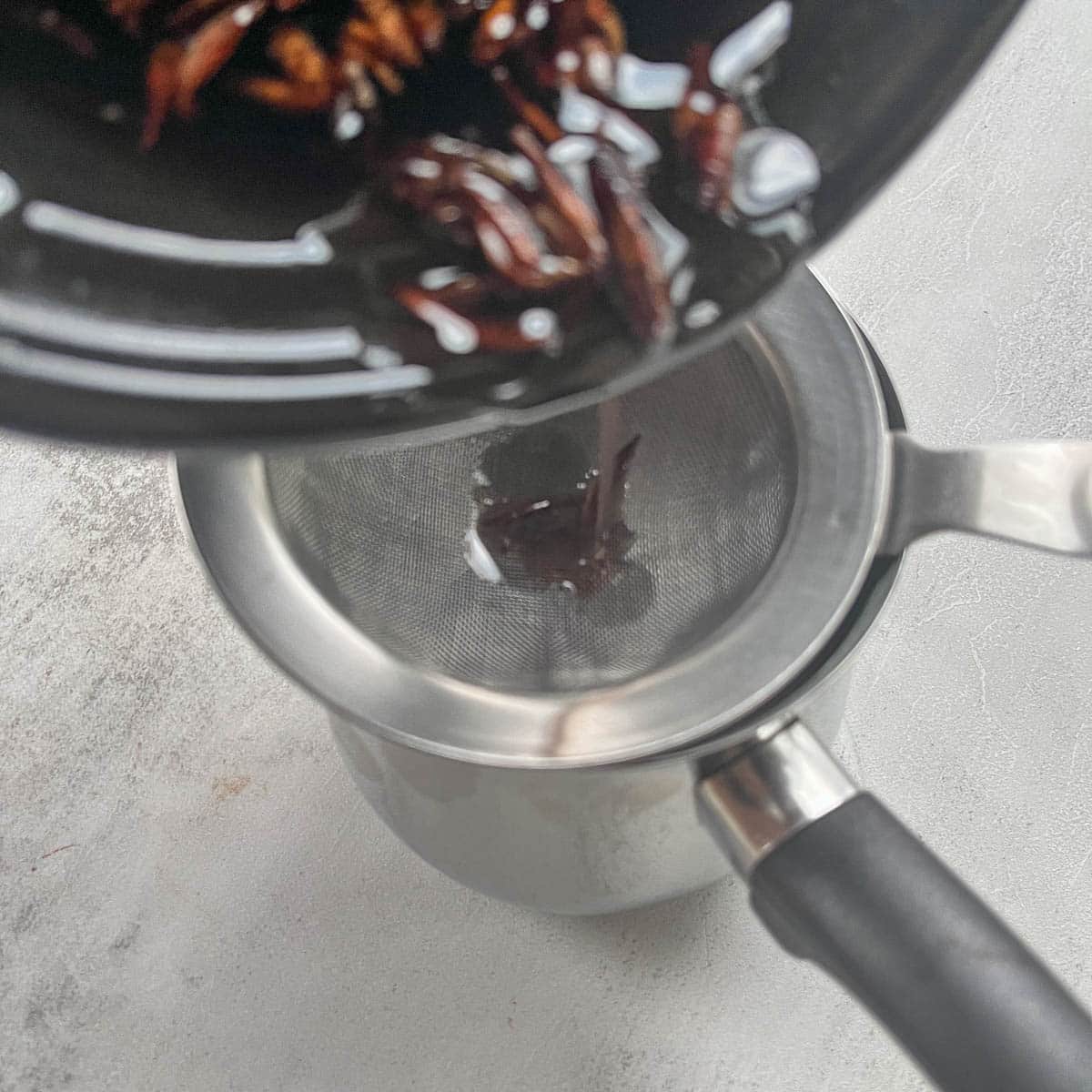
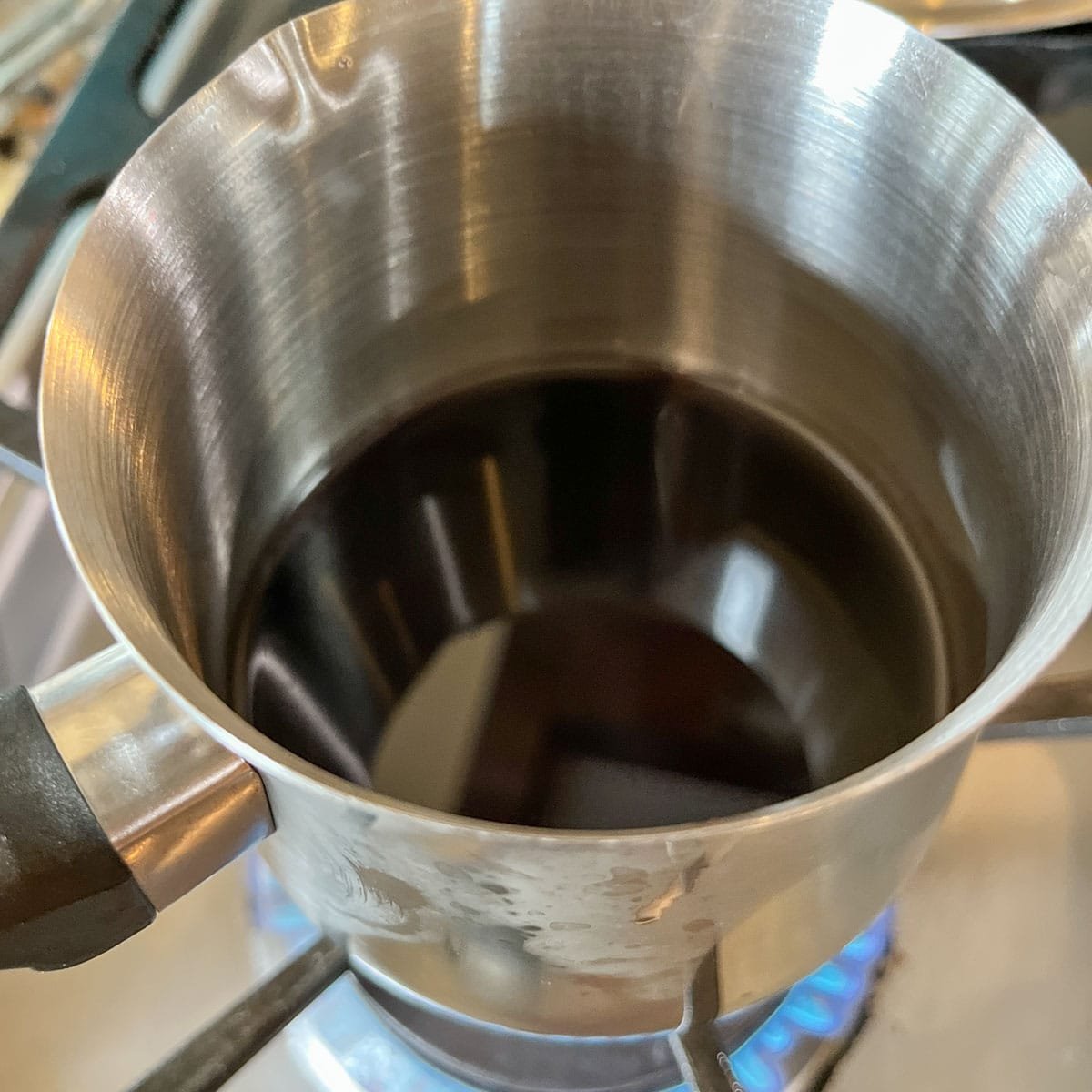
Pro Tip: If you have extra oil it can be stored in these little bottles and used in the same way you'd use the balm.
Melt the wax into the oil over very low heat. Stir to incorporate, then pour a small amount into the measuring cup or another container to determine consistency once it hardens. If you prefer a thicker texture, add more beeswax to the ibrik. If you want it thinner, add a small amount of oil.
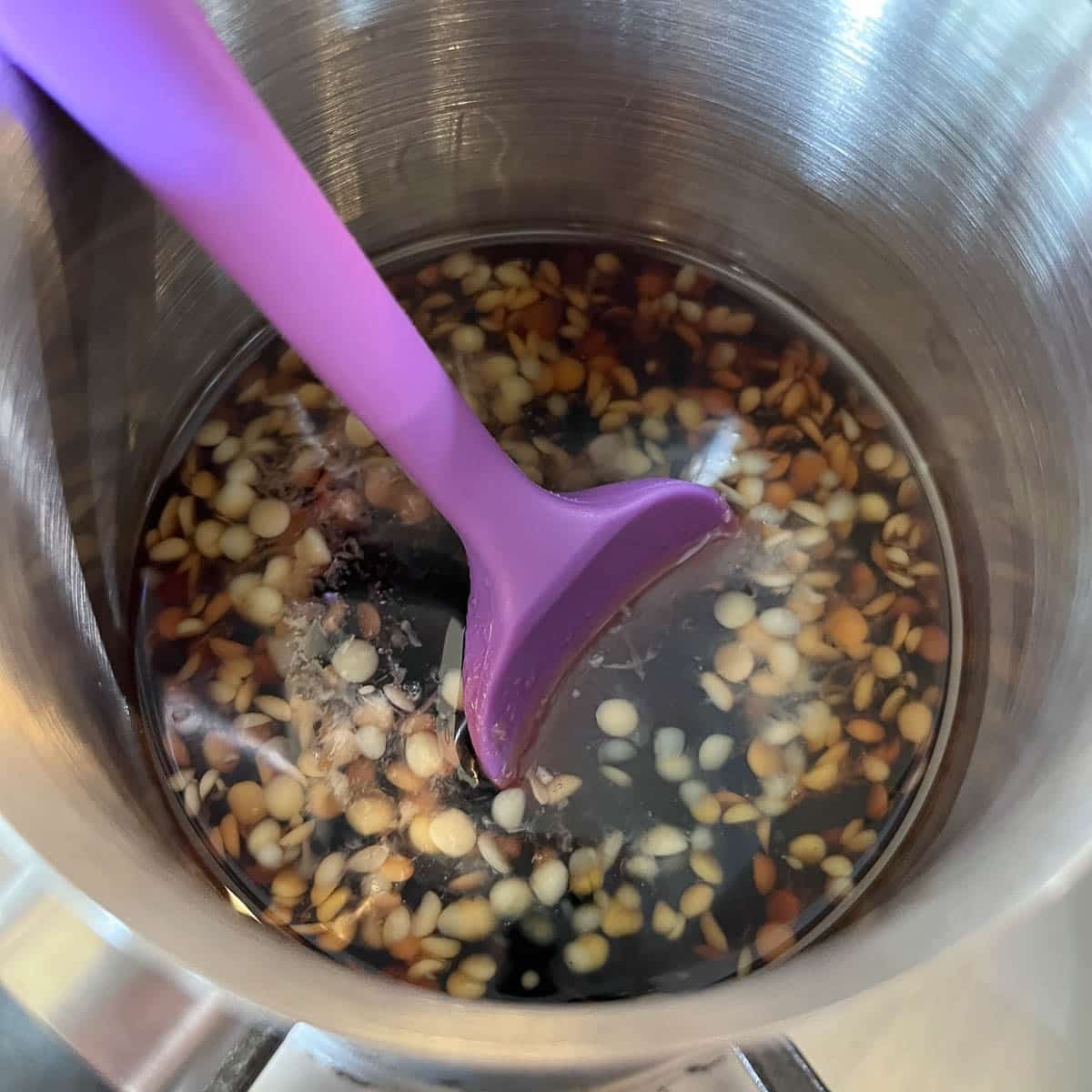
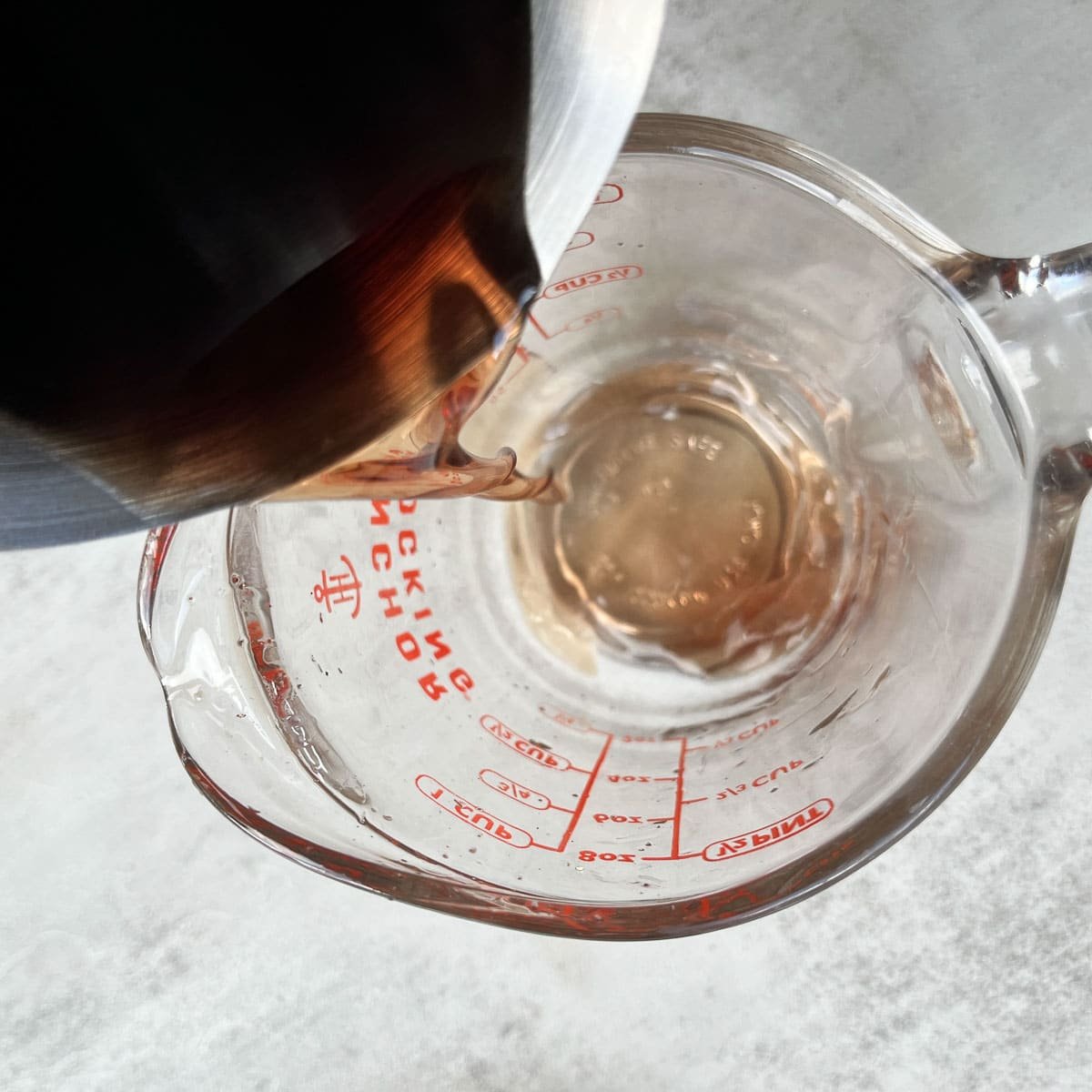
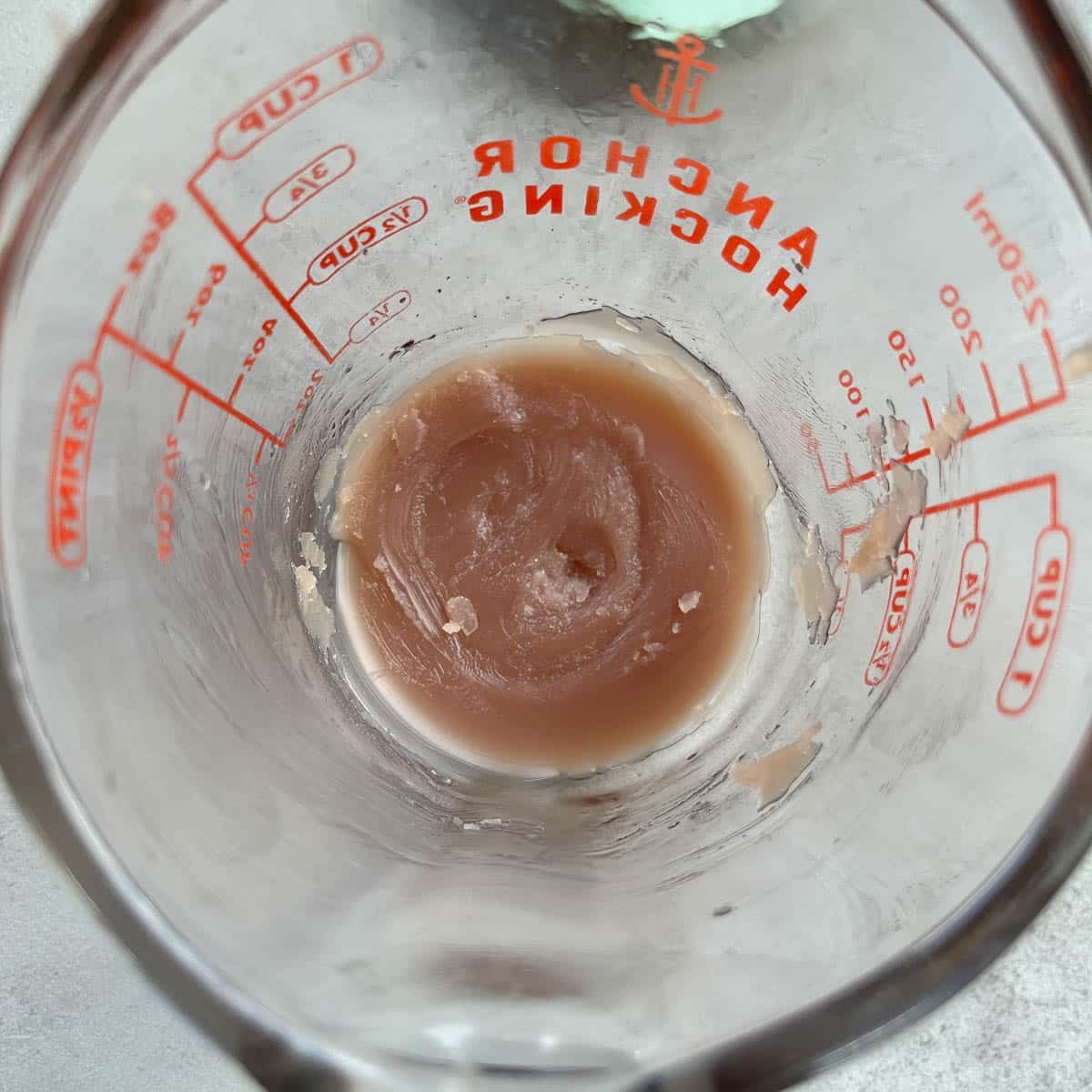
Pro Tip: If you plan on adding shea butter, vitamin E oil, or essential oils, you only need a small amount and you would add them now.
Once satisfied with the consistency, pour into canisters and allow to harden before screwing on the caps.
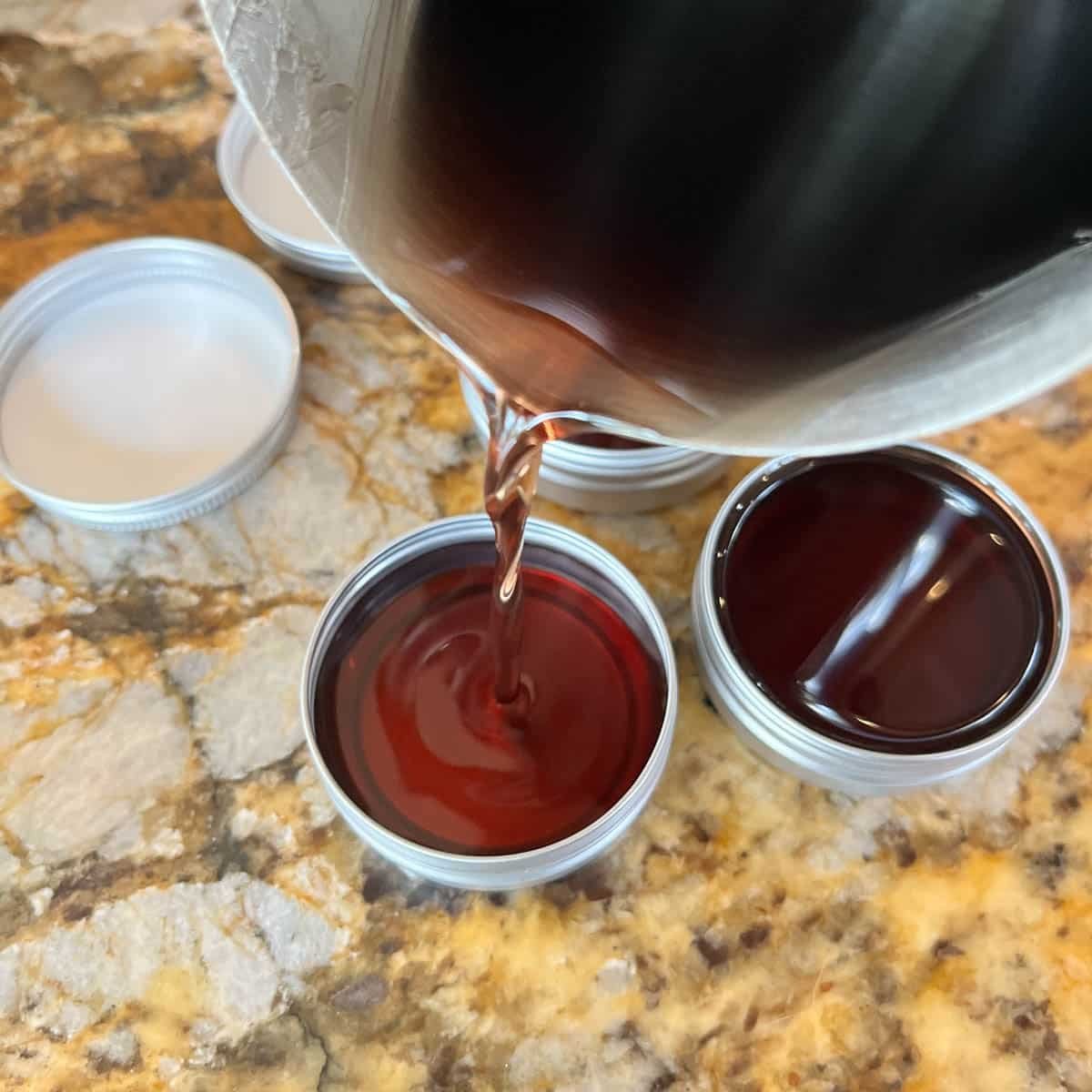
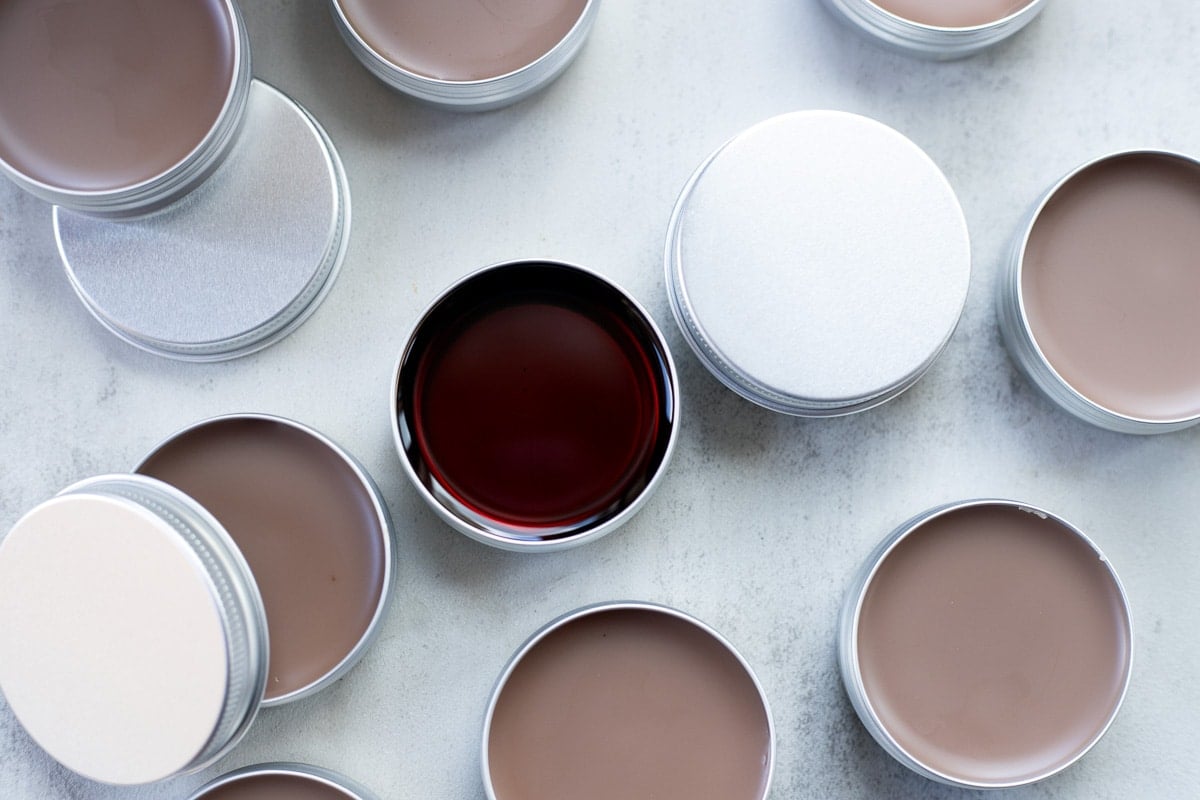
🤷🏻♀️ FAQs
The time to pick the buds will depend on the area where you live, but mid to late April seems like the right time for Northwest Montana. If spring comes earlier where you live, start checking as early as March.
No one knows exactly which trees were used to make balm of Gilead, but some sources suggest it was the resin from a mastic tree. Nowadays, most balm of Gilead is prepared using the unopened fresh buds from cottonwood trees, which are a part of the Salicaceae/willow family.
Jesus is the ultimate physician. He is known for performing miracles and healing the sick in body and in spirit. Therefore, Jesus is sometimes referred to as the Balm of Gilead. He is capable of healing all of our wounds.
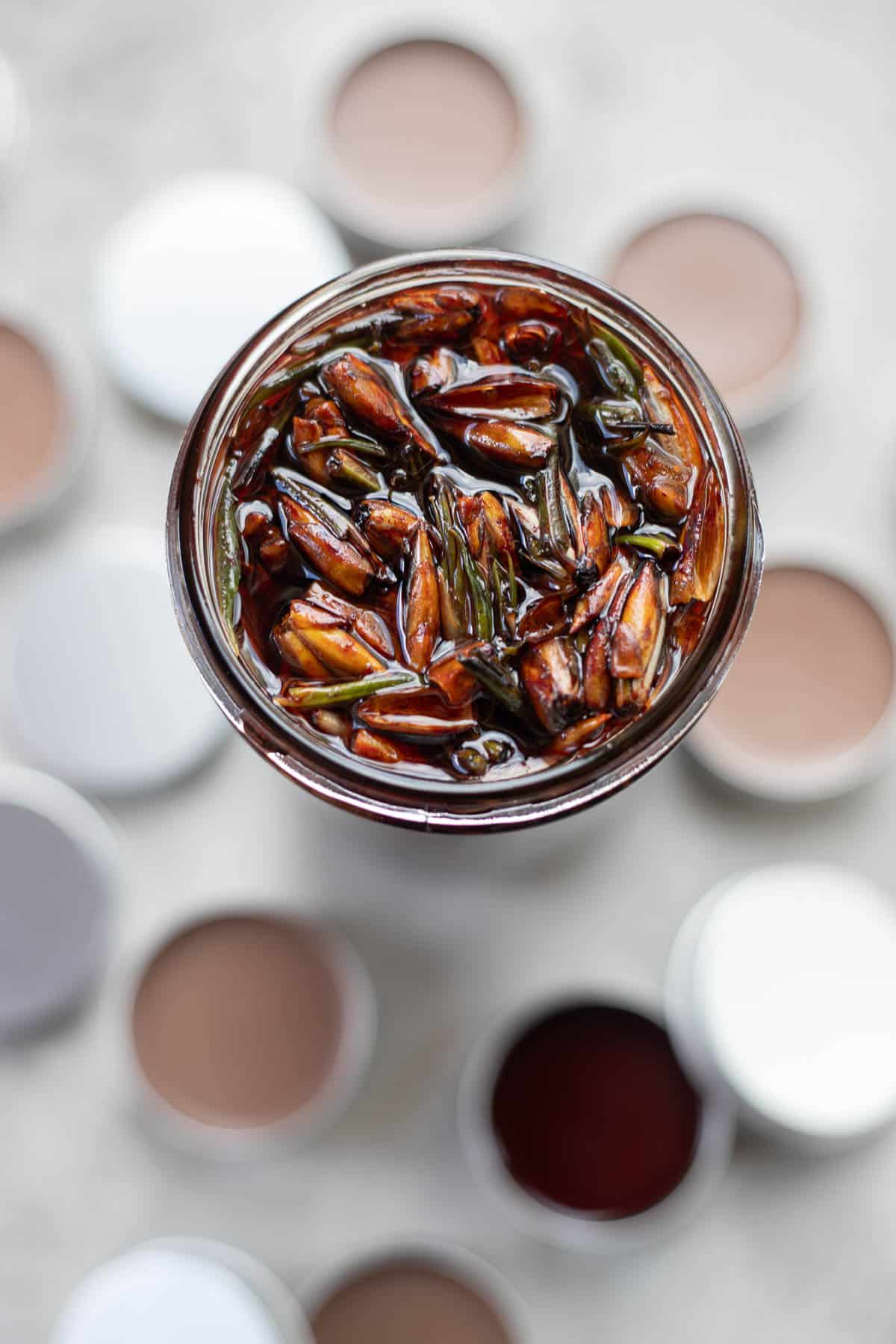
👩🏼🍳 Pro Tips
- 1 cup of infused oil mixed with ⅓ cup of beeswax makes approximately ten 1-ounce canisters of salve.
- I like to use these glossy labels with the 2" wide canisters linked above.
- Store balm in a cool location to keep it from liquifying.
🌼 Related Posts
Love this recipe? Please leave a 5-star 🌟🌟🌟🌟🌟rating in the recipe card below & a review in the comments section further down the page.
Stay in touch with me through social media @ Instagram, Pinterest, TikTok, and Facebook. Don't forget to tag me when you try one of my recipes!
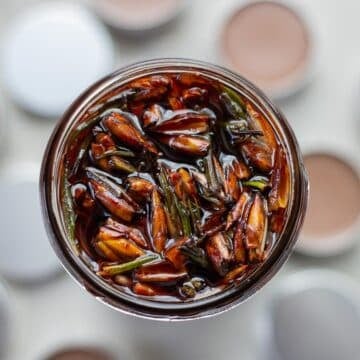
How to Make Balm of Gilead
Equipment
- 1 pair disposable gloves
- 1 Saucepan
- 20 1-ounce canisters
Ingredients
- 1 cup cottonwood buds
- 2 cups grapeseed oil
- ⅔ cup beeswax pellets
Instructions
Cold Infusion Method
- Place cottonwood buds in a jar and cover with oil until fully submerged. Cap the jar and place in a sunny window to allow the resin in the buds to infuse the oil over 6-8 weeks. I like to shake the bottle every now and then.
Hot Infusion (for those who don't like to wait)
- Add 1 cup of cottonwood buds to a small crockpot and cover with 2 cups of oil. Heat the oil over the lowest setting (warm) anywhere from 4 hours to a few days.
- When the oil is infused, use a fine mesh strainer to strain it. Measure the oil, then pour into a small saucepan or an ibrik. For every cup of oil, you'll need approximately 2 ounces (56 grams) or around ⅓ cup of wax pellets.
- Melt the wax into the oil over very low heat. Stir to incorporate, then pour a small amount into the measuring cup or another container to determine consistency once it hardens. If you prefer a thicker texture, add more beeswax to the ibrik. If you want it thinner, add a small amount of oil.
- Once satisfied with the consistency, pour into 1 ounce canisters and allow to harden before screwing on the caps. 2 cups of oil will yield approximately 20 1-ounce containers.
Notes
- Because some species of poplars and willows contain salicin in their bark, you may want to avoid them if you are allergic to aspirin. I recommend testing the balm on a small area first, especially if you have sensitive skin.
- If you lack patience, like me, you can use some of the oil as needed, while allowing the rest to infuse longer.
- If the oil gets too hot, turn it off until it cools down, then back on, as needed.
- If you have extra oil it can be stored in these little bottles and used in the same way you'd use the balm.
- If you plan on adding shea butter, vitamin E oil, or essential oils, you only need a small amount and you would add them when you add the wax.
- 1 cup of infused oil mixed with ⅓ cup of beeswax makes approximately ten 1-ounce canisters of salve.
- I like to use these glossy labels with the 2" wide canisters linked above.
- Store balm in a cool location to keep it from liquefying.

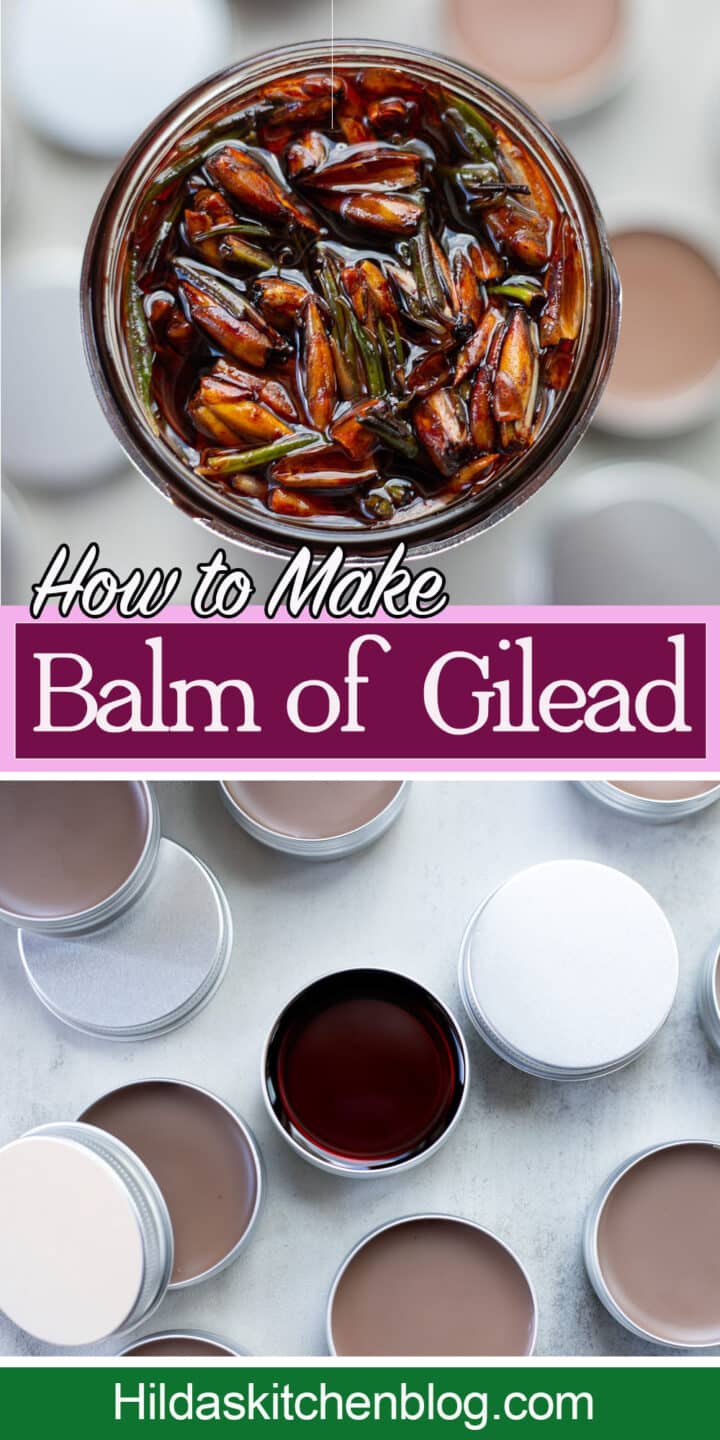
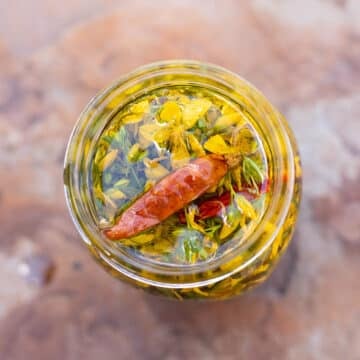
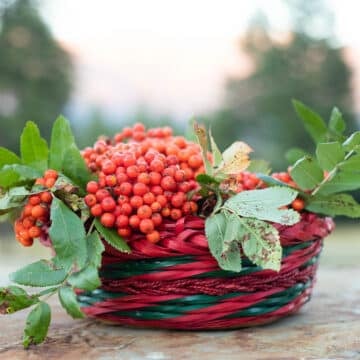
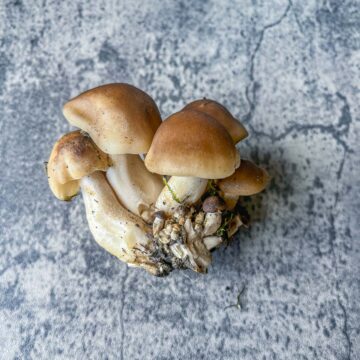

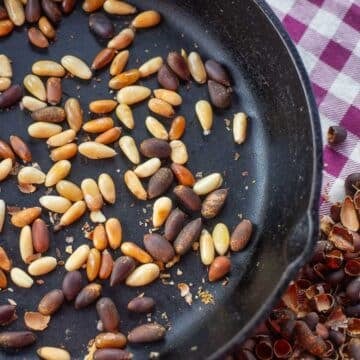
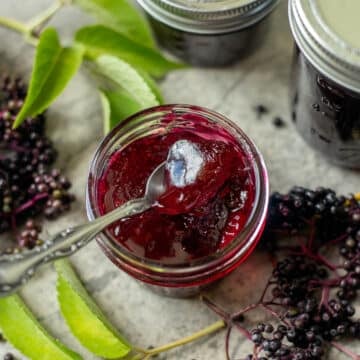

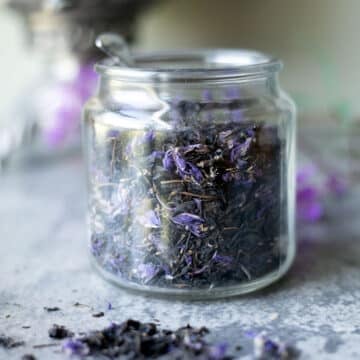
Kathy Fisher says
Wow, what an interesting, fascinating post. Great photos and thanks for answering the questions you posted. I love this.
Hilda Sterner says
Thank you, Kathy! I had fun doing this post. It's been on my mind for a long time!